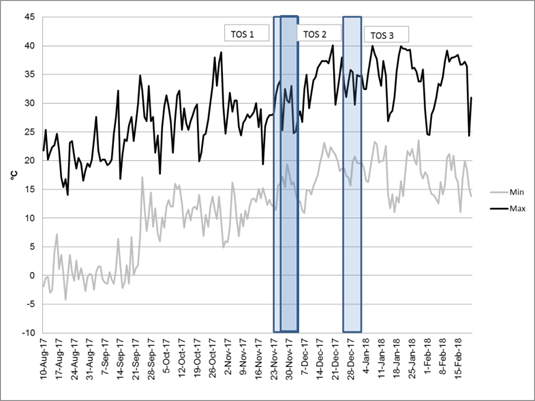Moving Summer Crop Sowing Early or Late – Risks and Rewards on the Liverpool Plains
The authors of this paper note in the conclusion: 'Early or late sowing of summer crops have both associated risks and rewards. The greatest risk of early sowing is the soil and air temperatures which the establishing crop are exposed to. Slow, patchy and reduced establishment can occur if the crop is sown too early, or colder than expected conditions or frosts prevail. There is a greater emphasis on selecting paddocks which do not have a history of winter weeds which may be difficult to control. Early planting can allow the flowering, grain fill and harvest to occur earlier than normal, reducing the risk of high temperatures and heat stress during flowering. An earlier harvest also provides a longer period to refill the soil water profile, increasing the likelihood of a double crop option.' Please access the full paper via the link below if this research interests you
The take home messages from this GRDC-funded research are below. Please access the full paper via the link below for methodology, references, acknowledgements and discussion.
- Planting early in August/September has less risk than delaying planting later until February for both sorghum and maize. There is little information to support moving sunflower sowing time earlier than currently established sowing windows
- Risks associated with earlier sowing include variable and low soil temperatures resulting in poor establishment and frost risk for all crops. Also, the risk of winter weed competition with young establishing crops. However, the flowering, grain fill and harvest periods are all brought considerably forward
- Late planting (i.e. early February) was not successful for sorghum or sunflower in the 2019/20 season due to damage from birds in sunflower and a combination of ergot, midge and slow grain ripening being affected by frost in sorghum. Maize had few agronomic issues apart from a longer grain filling period and dry down delaying harvest
- Additional research, particularly in maize and sunflower is required to support the conclusions in this paper before adoption by growers.

Figure 2. Maximum and minimum temperatures at Breeza 2017-18
Blue rectangles indicate flowering periods associated with the three sowing times.